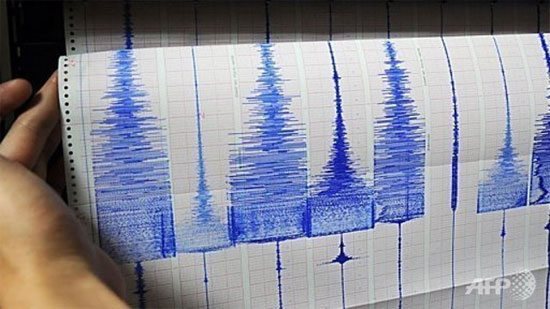Strong earthquakes rocked Greece, Nicaragua
In the afternoon of June 15 (local time), a magnitude 6.2 earthquake shook the islands of Crete in southern Greece but initial information showed no significant damage.
The Geodynamics Institute of Athens National Observatory said the epicenter was 10 km deep, 143 km southwest of the city of Ierapetra.
After this earthquake, there were four other aftershocks that caused anxiety in the local community and tourists were visiting the islands.

Photos are for illustrative purposes only.(Source: AFP)
Greece is one of the most earthquake-prone countries in the world and small pulses occur almost daily.
The last serious earthquake in Greece occurred in 1999, killing more than 100 people and many properties being destroyed.
On the same day, the US Geological Survey (USGS) said at 1734 (GMT), a 6.6 magnitude earthquake rocked the Nicaragua coastal area.
The epicenter of the earthquake is located at a depth of 35 km and 90 km west of Managua. Following this earthquake were two aftershocks with a magnitude of 5 and 5.3 Richter scale.
Seismicist Angelica Munoz said earthquake vibrations are felt almost across the country. In the city of Leon, 90km northwest of Managua, the cathedral's dome has been damaged. Phone and Internet services are also interrupted for a short time.
The US Pacific tsunami warning center said there is no risk of a major tsunami after the earthquake series but there is a possibility of small tsunamis.
Earlier, on December 23, 1972, a 6.2-magnitude earthquake occurred in Nicaragua's capital Managua that killed 5,000 people and pushed more than 250,000 people into the sky.
- Strong earthquakes have never been seen in Quang Nam
- Nicaragua has strong earthquakes, spreading to many neighboring countries
- Two strong earthquakes shook Asia
- Iran continues to suffer a strong aftershock of 5.3 on the Richter scale
- Why does Japan have so many earthquakes?
- The biggest earthquakes in history
- 381 people died in strong earthquakes in China
- Indonesia shakes because of strong earthquakes, at least 1 person dies
- Strong earthquake in Russia
- Strong earthquake shook Myanmar, Thailand
- The meteorite exploded in the capital Nicaragua?
- The magnitude 8 earthquake shook northern Peru
 Is the magnetic North Pole shift dangerous to humanity?
Is the magnetic North Pole shift dangerous to humanity? Washington legalizes the recycling of human bodies into fertilizer
Washington legalizes the recycling of human bodies into fertilizer Lightning stone - the mysterious guest
Lightning stone - the mysterious guest Stunned by the mysterious sunset, strange appearance
Stunned by the mysterious sunset, strange appearance